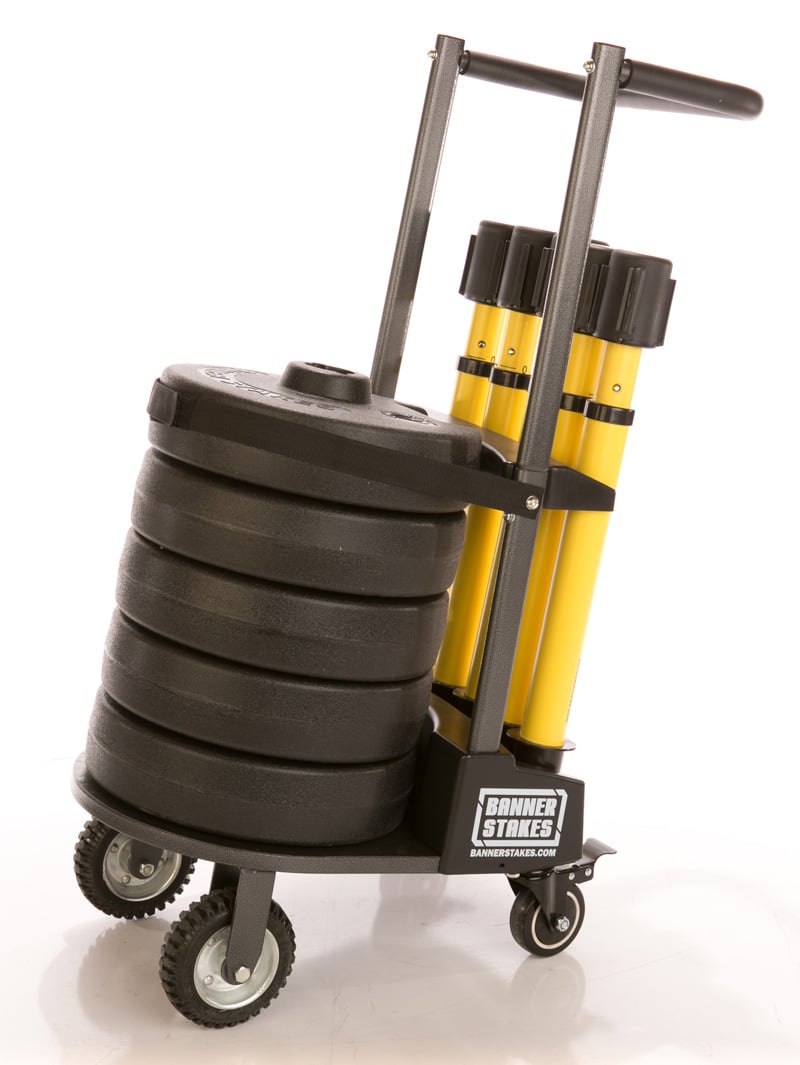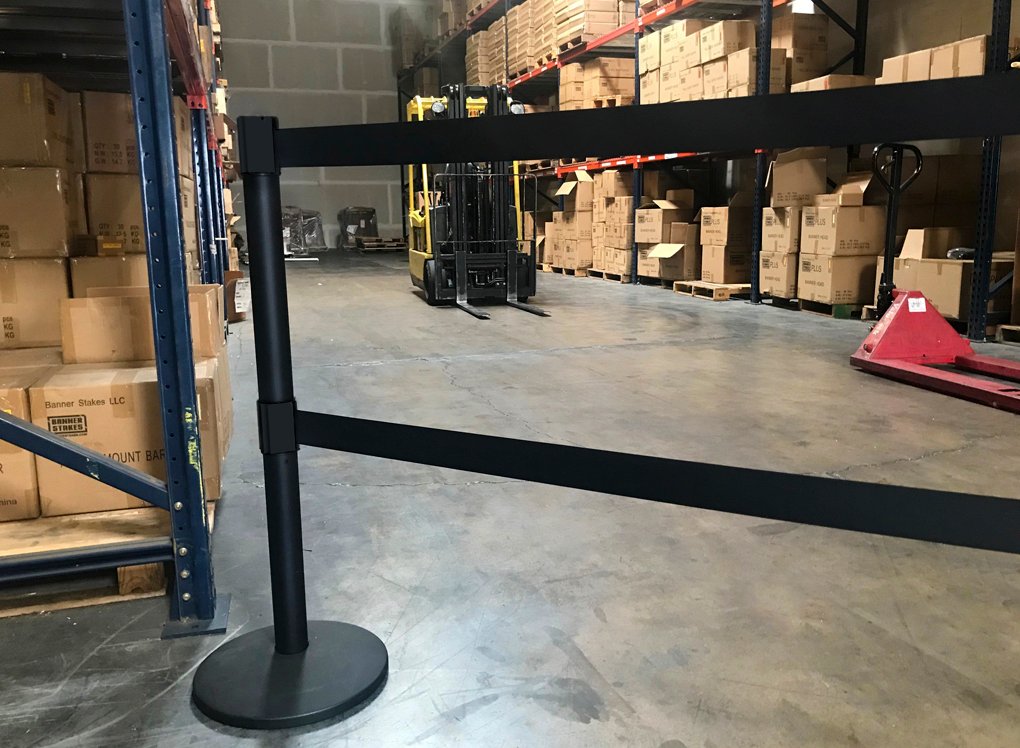ARC Flash Boundary information. When it comes to electrical safety, one of the major concerns is the risk of an arc flash, which is an electrical explosion as a result of a low-impedance connection. Such explosions can result in serious injuries and fatalities, for that reason, the National Fire Protection Association developed a document of workplace electrical safety requirements. That document, the NFPA 70E, dedicates a significant portion of its content to the prevention of accidents related to the arc flash hazard.
Occurrences of this particular hazard are rare, but the unpredictable and extremely hazardous nature of this hazard makes it a major concern and it is important to take preventative steps to ensure workplace safety. The standards detailed in the NFPA 70E boundary law strives to help you
implement such steps.
The first step outlined in the NFPA 70E standard for electrical safety is to set up protective boundaries around potentially-hazardous equipment. Banner Stakes compliant products are an excellent choice for creating just such a boundary. Banner Stakes manufactures several different
products to address the “Boundary” required from our 30’ & 7’ Magnetic / Multi-surface Retractable
Barriers to our PLUS Cart that has 5 Barrier Posts with a 15’ Belt/ribbon that has the safety message “Do Not Enter–ACR Flash Boundary” printed on a Red Belt/ribbon that can cover up to
75’ of total length.
The next step, according to this standard, is to provide appropriate safety signage. Informative and detailed labels should be posted on equipment that could pose a danger to employees. Meeting these signage requirements can go a long ways in the prevention of tragic work place accidents.
The last preventative step, which is also an employee’s last line of defense against dangerous electrical hazards is a worker’s PPE or personal protective equipment. Recommendations for appropriate PPE can be found in the NFPA 70E.
This law and the related standards are essential for the prevention of workplace accidents and the protection of employees from this and other
electrical hazard dangers.
The Main Purpose of the Arc Flash Boundary Law
The arc flash boundary law, also known as NFPA 70E, is the standards for electrical safety in the workplace. NFPA 70E, the Standard for Electrical Safety in the Workplace, focuses on protecting employees and identifying the necessary requirement to free a workplace from electrical hazards.
This standard specifically cover the safety requirements for electrical equipment and conductors in or on buildings and other structures, conductors connecting to the supply of electricity, and outside conductors on the premises. When safety regulations for the treatment of such equipment and conductors are ignored, it can lead major electrical hazards and serious workplace injuries. The NFPA 70E was put in place to standardize electrical safety regulations and protect employees from hazardous exposure in the workplace. Compliance to the standards outlined in the NFPA 70E helps companies prevent hazards such as shock, electrocution, and arc flash or blasts. Each of these electrical safety hazards can result in fatalities or the serious injury of employees if the proper steps for electrical safety regulations are not observed by a company.
Here at Banner Stakes, we prioritize workplace safety, which is why the Magnetic Heads that are used with our products are compliant with the NFPA 70E Boundary Law and ideal for helping you achieve a safer workplace.
Maintain a thorough knowledge of the Arc Flash Boundary Law
To optimize workplace safety, it is important to stay well-versed in the changes made to the NFPA 70E. Some of the most recent changes to the Standard for Electrical Safety in the Workplace include:
- A clarification that training and auditing are both equally important for safety-related maintenance requirements.
- An addition of a new definition of “energized electrical work permit”.
- A revision of the definition of “qualified person”.
- An inclusion of an electrical safety program that takes into consideration the condition of maintenance of equipment in the workplace.
- A requirement of annual field work audits.
- Updates must be made to labels when a hazard risk assessment makes the current label incorrect
- Changes to the criteria for the use of insulated tools and the handling of equipment.
- Barricades must be place no closer than the limited approach boundaries.
- A risk assessment must be performs is there exists a chance of coming in contact with energized lines or parts.
- A risk assessment must be done before any work is performed on a battery system.
These changes and more have been made to optimize the standard for electrical safety in the workplace. Maintaining an up-to-date knowledge and familiarity with the standards outlined in the NFPA 70E can assist companies in following the regulations that can protect their employees and
prevent avoidable workplace accidents.
This document was designed and is regularly revised in order to encompass a relevant and comprehensive standard of electrical-related safety practices in the workplace, maintenance requirements for optimum employee safety, and the requirements for the safe handling of special equipment. The guidance provided by the NFPA 70E helps companies to identify and assess hazards and risks in the workplace, appropriately selecting employee PPE and the necessary employee safety training.
By appropriately evaluating electrical risks with the help of this workplace safety standard, companies and protect themselves and their employees from potentially costly and hazardous accidents. The use of compliant barrier systems and safety signage, workplace safety can be optimized and employees can take appropriate action to avoid exposure to electrical hazards by performing the required risk assessments before attempting to do any work within a hazardous area.
Banner Stakes Safety & Hazard Communication Products can help you meet the Workplace safety standards.
It is essential to know and meet the standards for electrical safety in the workplace. When an accident can lead to the damage of valuable equipment and the serious injury or death of an employee, the cost and time it takes to provide employees with proper safety training and meet electrical safety standards with appropriate barrier systems and safety signage is a worthwhile investment. It is our goal to help you meet the safety standards outlined in the NFPA 70E because there is nothing more important than workplace safety and nothing more tragic than a preventable accident or death. To help you meet your safety requirements, we have designed our barrier systems with Magnetic Heads which are compliant with the National Fire Protection Association requirements.
Visit our blog page often to read the latest information from our product lines.


